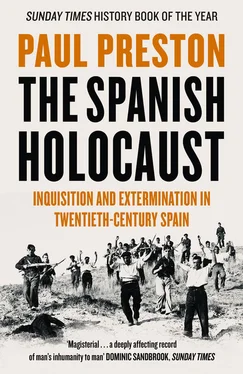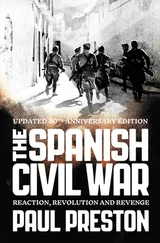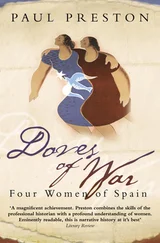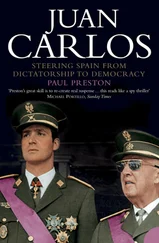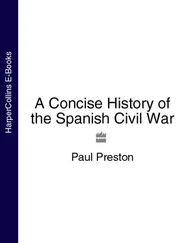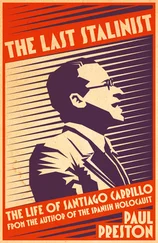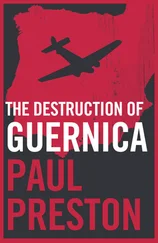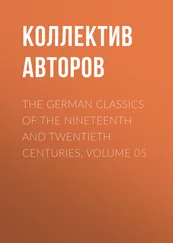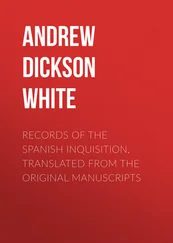Inquisition and Extermination in Twentieth-Century Spain

HarperPress
An imprint of HarperCollinsPublishers
1 London Bridge Street
London SE1 9GF
www.harpercollins.co.uk
Published in Great Britain by HarperPress in 2012
Copyright © Paul Preston 2012
Paul Preston asserts the moral right to be identified as the author of this work
A catalogue record for this book is available from the British Library
THE SPANISH HOLOCAUST. Copyright © Paul Preston 2012. All rights reserved under International and Pan-American Copyright Conventions. By payment of the required fees, you have been granted the nonexclusive, nontransferable right to access and read the text of this e-book on-screen. No part of this text may be reproduced, transmitted, downloaded, decompiled, reverse-engineered, or stored in or introduced into any information storage and retrieval system, in any form or by any means, whether electronic or mechanical, now known or hereinafter invented, without the express written permission of HarperCollins e-books.
Source ISBN: 9780002556347
Ebook Edition © JANUARY 2013 ISBN: 9780007467228
Version: 2016-07-04
For Gabrielle
Cover
Title Page
Dedication
List of Illustrations
Prologue
PART 1: THE ORIGINS OF HATRED AND VIOLENCE
1 Social War Begins, 1931–1933
2 Theorists of Extermination
3 The Right Goes on the Offensive, 1933–1934
4 The Coming of War, 1934–1936
PART 2: INSTITUTIONALIZED VIOLENCE IN THE REBEL ZONE
5 Queipo’s Terror: The Purging of the South
6 Mola’s Terror: The Purging of Navarre, Galicia, Castile and León
PART 3: THE CONSEQUENCE OF THE COUP: SPONTANEOUS VIOLENCE IN THE REPUBLICAN ZONE
7 Far from the Front: Repression behind the Republican Lines
8 Revolutionary Terror in Madrid
PART 4: MADRID BESIEGED: THE THREAT AND THE RESPONSE
9 The Column of Death’s March on Madrid
10 A Terrified City Responds: The Massacres of Paracuellos
PART 5: TWO CONCEPTS OF WAR
11 Defending the Republic from the Enemy Within
12 Franco’s Slow War of Annihilation
PART 6: FRANCO’S INVESTMENT IN TERROR
13 No Reconciliation: Trials, Executions, Prisons
Epilogue: The Reverberations
Acknowledgements
Photographic Insert
Glossary
Notes
Appendix
Searchable Terms
Other Books by Paul Preston
Copyright
About the Publisher
Franco in Seville with the brutal leader of the ‘Column of Death’, Colonel Juan Yagüe. (© ICAS-SAHP, Fototeca Municipal de Sevilla, Fondo Serrano)
Yagüe’s artillery chief, Luis Alarcón de la Lastra. (EFE/jt)
General Gonzalo Queipo de Llano. (EFE/Jalon Angel)
General Emilio Mola. (EFE/Delespro/jt)
Gonzalo de Aguilera. (Courtesy of Marianela de la Trinidad de Aguilera y Lodeiro, Condesa de Alba de Yeltes)
Virgilio Leret with his wife, the feminist, Carlota O’Neill. (Courtesy of Carlota Leret-O’Neill)
Amparo Barayón. (Courtesy of Ramon Sender Barayón)
A Coruña, Anniversary of the foundation of the Second Republic, 14 April 1936. (Fondo Suárez Ferrín, Proxecto “Nomes e Voces”, Santiago de Compostela)
José González Barrero, Mayor of Zafra. (Courtesy of González Barrero family)
Modesto José Lorenzana Macarro, Mayor of Fuente de Cantos. (Courtesy of Cayetano Ibarra)
Ricardo Zabalza, secretary general of the FNTT and Civil Governor of Valencia during the war, with his wife Obdulia Bermejo. (Courtesy of Abel Zabalza and Emilio Majuelo)
Mourning women after Castejón’s purge of the Triana district of Seville, 21 July 1936. (© ICAS-SAHP, Fototeca Municipal de Sevilla, Fondo Serrano)
Queipo de Llano (foreground) inspects the 5º Bandera of the Legion in Seville on 2 August 1936. (© ICAS-SAHP, Fototeca Municipal de Sevilla, Fondo Serrano)
Rafael de Medina Villalonga, in white, leads the column that has captured the town of Tocina, 4 August 1936. (© ICAS-SAHP, Fototeca Municipal de Sevilla, Fondo Serrano)
Trucks taking miners captured in the ambush at La Pañoleta for execution. (© ICAS-SAHP, Fototeca Municipal de Sevilla, Fondo Serrano)
Utrera, 26 July 1936. Townsfolk taken prisoner by the column of the Legion which captured the town. (© ICAS-SAHP, Fototeca Municipal de Sevilla, Fondo Serrano)
Lorca’s gravediggers. (Courtesy of Víctor Fernández and Colección Enrique Sabater)
Regulares examine their plunder. (© ICAS-SAHP, Fototeca Municipal de Sevilla, Fondo Serrano)
After a village falls, the column moves on with stolen sewing machines, household goods and animals. (© ICAS-SAHP, Fototeca Municipal de Sevilla, Fondo Serrano)
A firing squad prepares to execute townspeople in Llerena. (Archivo Histórico Municipal de Llerena, Fondo Pacheco Pereira, legajo 1.)
Calle Carnicerías (Butchery Street) in Talavera de la Reina. (© ICAS-SAHP, Fototeca Municipal de Sevilla, Fondo Serrano)
Mass grave near Toledo. (© ICAS-SAHP, Fototeca Municipal de Sevilla, Fondo Serrano)
Pascual Fresquet (centre left) with his ‘death brigade’ in Caspe. (España. Ministerio de Cultura. Centro Documental de la Memoria Histórica. FC-CAUSA_GENERAL, 1426, EXP.45, IMAGEN128)
The seizure of the Iglesia del Carmen in Madrid by militiamen. (España. Ministerio de Cultura. Centro Documental de la Memoria Histórica. FC-Causa_General, 1907, 1, p.81)
Arms and uniforms of the Falange found by militiamen in the offices of the monarchist newspaper ABC. (España. Ministerio de Cultura. Centro Documental de la Memoria Histórica. FC-Causa_General, 1814, 1, IMAGEN6)
Aurelio Fernández. (International Institute of Social History, Amsterdam, IISG-CNT)
Juan García Oliver. (International Institute of Social History, Amsterdam, IISG-CNT)
Ángel Pedrero García. (España. Ministerio de Cultura. Centro Documental de la Memoria Histórica. FC-CAUSA_GENERAL, 1547, EXP.9, IMAGEN45)
The Brigada García Atadell outside their Madrid headquarters, the Rincón Palace. (EFE/Díaz Casariego/jgb)
Santiago Carrillo. (EFE/jgb)
Melchor Rodríguez. (EFE/Vidal/jgb)
The wounded Pablo Yagüe receives visitors. (EFE/Vidal/jgb)
The cameraman Roman Karmen and the Pravda correspondent Mikhail Koltsov. (Courtesy of Victor Alexandrovich Frandkin, Koltsov family)
Andreu Nin and Vladimir Antonov-Ovseenko. (L’Arxiu Fotogràfic de Barcelona)
Josif Grigulevich, the Brigadas Especiales, Roman Karmen, then two of the NKVD staff, Lev Vasilevsky and then his boss, Grigory Sergeievich Syroyezhkin. Madrid October 1936. (Cañada Blanch Collection)
Vittorio Vidali. (Imperial War Museum)
Refugees flee from Queipo’s repression in Málaga towards Almería. (Photograph by Hazen Sise, reproduced courtesy of Jesús Majada and El Centro Andaluz de la Fotografía)
Exhaustion overcomes the refugees from Málaga on the road to Almería. (Photograph by Hazen Sise, reproduced courtesy of Jesús Majada and El Centro Andaluz de la Fotografía)
The Regulares enter northern Catalonia January 1939. (España. Ministerio de Cultura. Centro Documental de la Memoria Histórica. FOTOGRAFIAS-DESCHAMPS, FOTO.7)
Republican prisoners packed into the fortress of Montjuich in Barcelona, February 1939. (España. Ministerio de Cultura. Centro Documental de la Memoria Histórica. FOTOGRAFIAS-DESCHAMPS, FOTO.764)
Читать дальше
